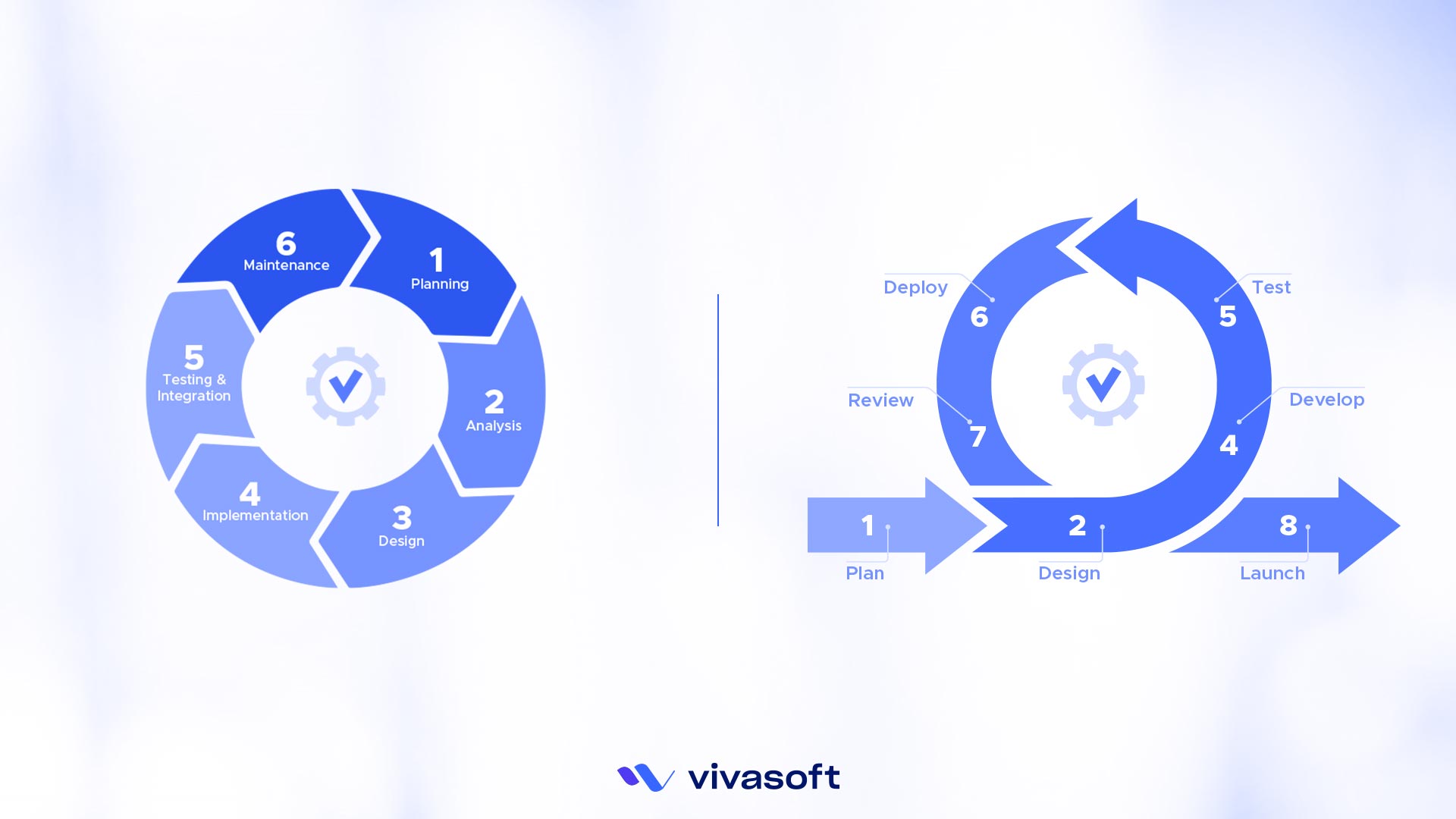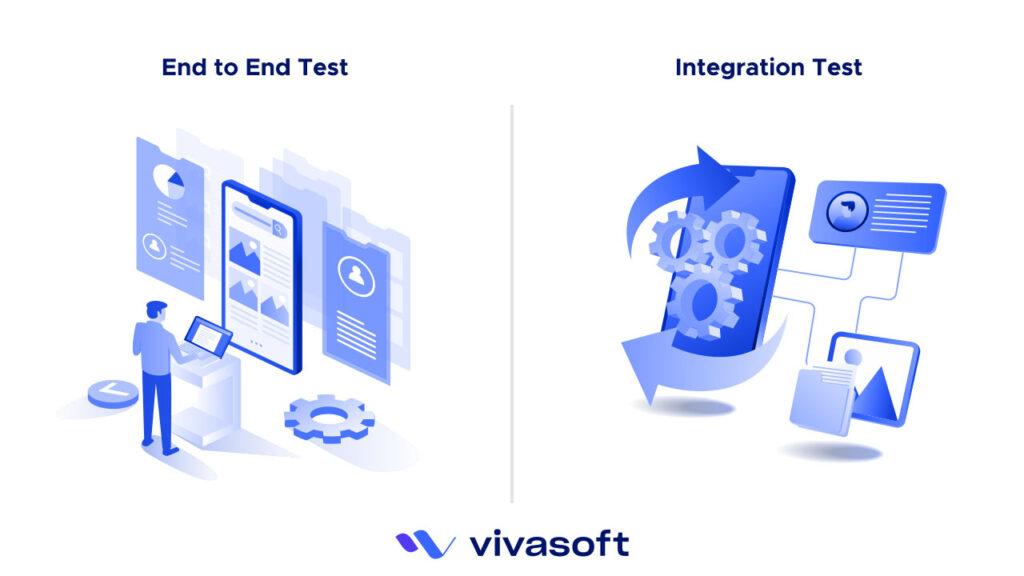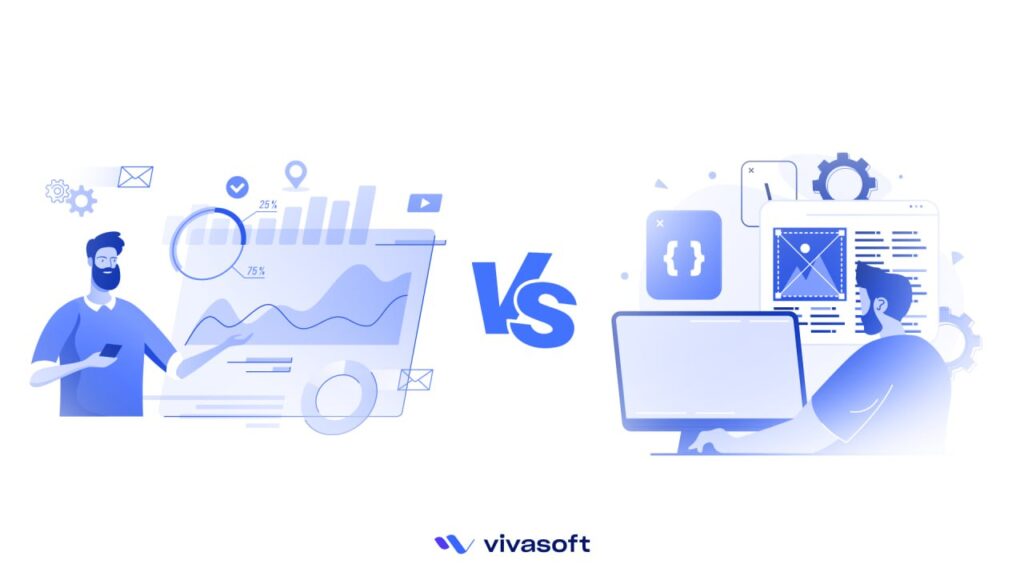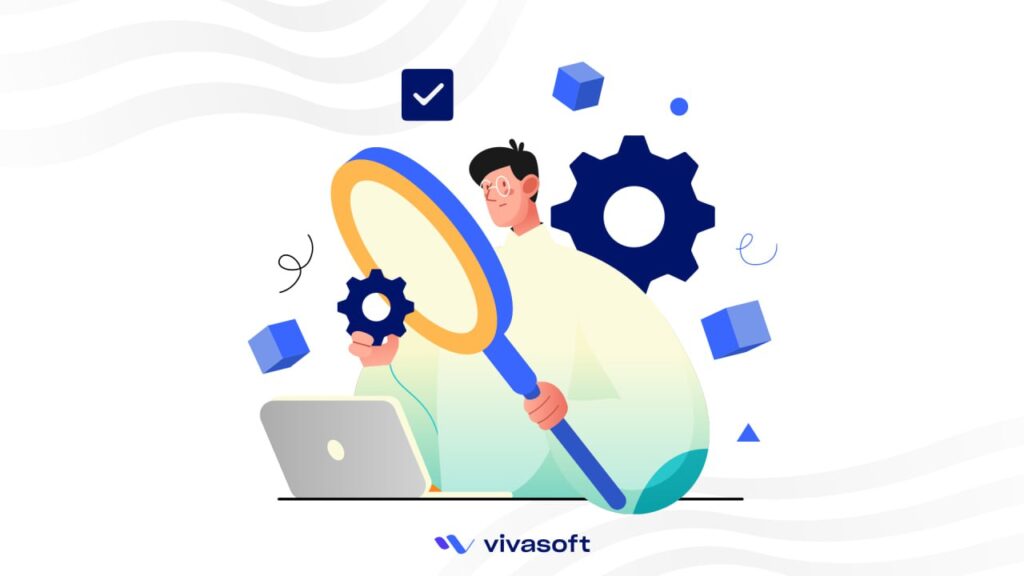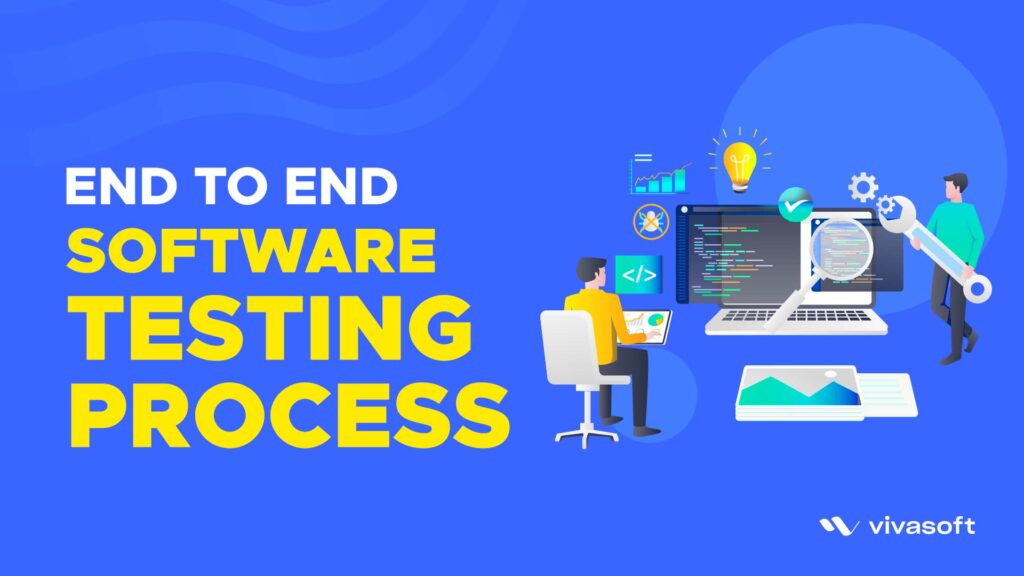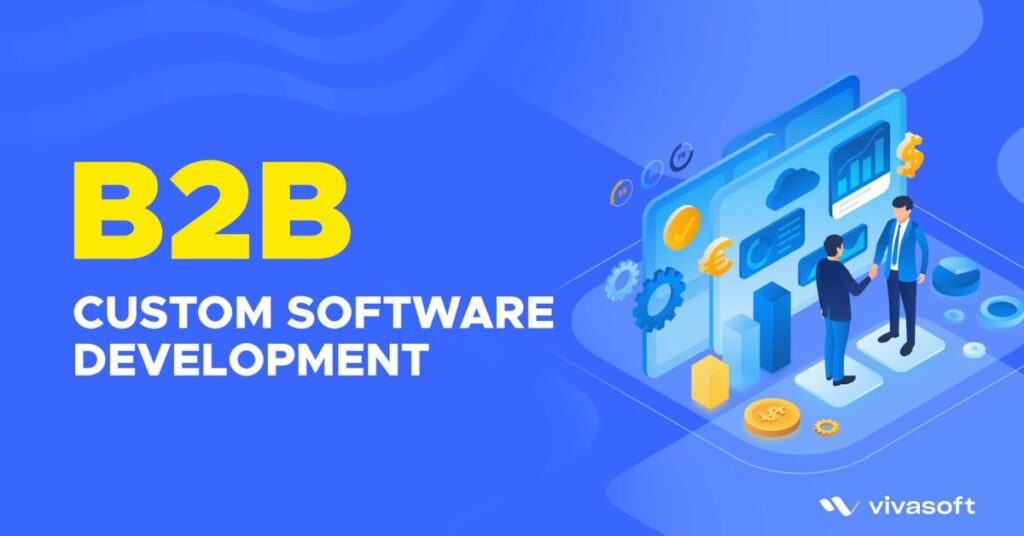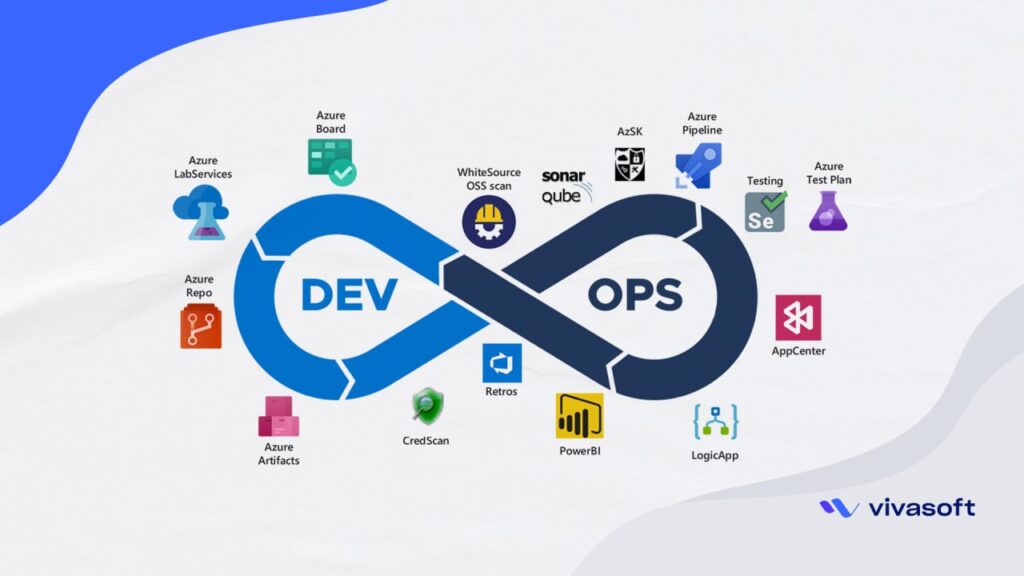Software Development Life Cycle (SDLC) is a structured approach to software design & development. SDLC can be used to develop both hardware and software. On the other hand, Agile Development methodology is a flexible and iterative approach to software development. It prioritizes collaboration, flexibility, adaptability, and delivering working software in short iterations.
The software development methodology impacts factors such as project timeline, cost, quality, and customer satisfaction. So, choosing the right development methodology is crucial for the success of any software project.
The Key difference between these two models is their methods to software development. In this article, we’ll describe broadly on SDLC vs. Agile Development. We will discuss the strengths and weaknesses of them and help you make an informed decision for your next software project.
What is SDLC?
The abbreviation of SDLC is Software Development Life Cycle. SDLC is a systematic process used by software development teams to design, develop, test, and deploy high-quality software. It helps in delivering software with the highest quality at the lowest cost possible. It is a structured way to efficient and effective software development.
Key Characteristics of SDLC
Sequential Phases: SDLC follows a series of sequential phases including planning, analysis, design, implementation, testing, deployment, and maintenance. Each phase builds upon the previous one. They have specific objectives and deliverables to ensure a systematic progression.
Documentation: Thorough documentation is integral to SDLC. Documentation includes requirements specifications, design documents, test plans, user manuals, and maintenance guides. This makes project management, knowledge transfer, and communication easier.
Stakeholder Involvement: SDLC promotes active involvement of stakeholders throughout the whole development process. Here, Clients, end-users, developers, testers, and project managers, collaborate to define requirements. They provide feedback, and make informed decisions.
Quality Assurance: SDLC prioritizes quality assurance at every stage of development. It performs quality assurance activities like code reviews, testing, and validation. This criteria ensures that software meets specified requirements, standards, and user expectations.
Risk Management: In SDLC development method level of risks are identifiable. SDLC integrates risk management practices to identify, assess, and mitigate potential risks. Risk analysis helps to anticipate challenges and allocate resources effectively. This also minimizes project disruptions during development.
Change Management: SDLC allows for changes and revisions to requirements through change management processes. Change requests are implemented cautiously to minimize impact on project timelines and budgets.
Continuous Improvement: SDLC helps teams get better through feedback mechanisms. In the SDLC method there are learning sessions, and review sessions on what went well and what didn’t after finishing a project. This way, the team can improve quality, and get customer satisfaction with each iteration.
Phases of SDLC
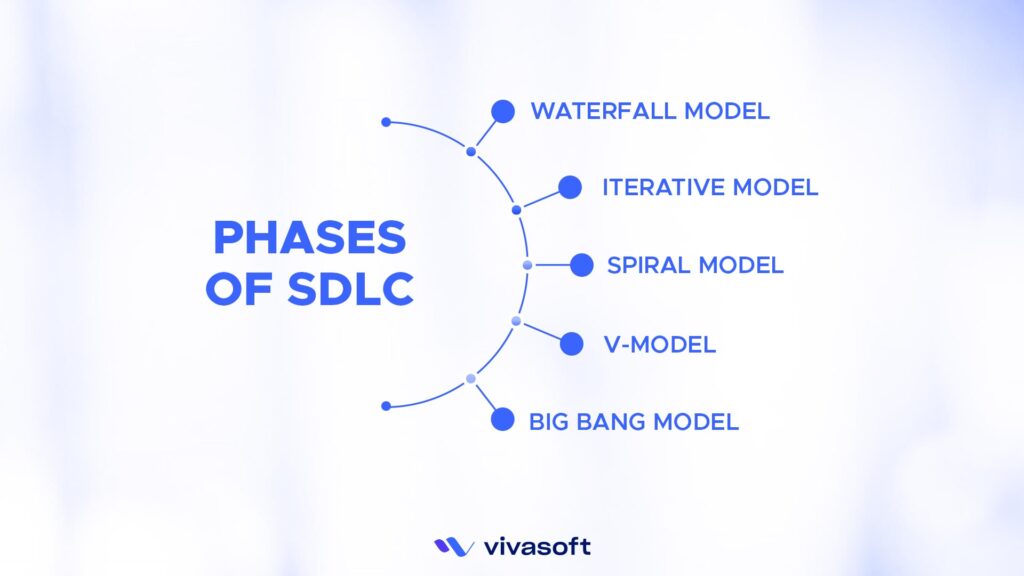
Waterfall Model: Each phase of the development process flows downwards like a waterfall in the waterfall model. Here, one phase is completed before the next one begins. It is the most traditional and universally accepted SDLC model. Also, this model is linear and sequential, which makes it easy to understand.
Iterative Model: In iterative model, a large application development is broken into smaller pieces. The Iterative Model repeats the development cycle multiple times. Each iteration adds new features or improvements based on feedback from previous iterations. This model gives adaptation flexibility to changing requirements during the development process.
Spiral Model: The Spiral Model combines the elements of both the Waterfall and Iterative models. The first step in the spiral model is the identification of objectives of a cycle. There are different alternatives possible for achieving the goals. The next thing to do is to evaluate these different alternatives of that cycle. The last step is to develop strategies to solve uncertainties or risks with activities like prototyping & benchmarking. Spiral model development is typically suited for large, complex, and expensive projects.
V-Model: V-Model is also known as the Verification and Validation Model. It is a variation of the Waterfall Model. In this development model testing is integrated throughout the development process. This model requires testing and validation at each stage of the development process.
Big Bang Model: The Big Bang Model requires all phases of the SDLC to happen simultaneously. It does not have any specific order or sequence. This model is fast-paced but it lacks structure and clarity. It’s not very good for large or complex projects. It is best suited for small, straightforward projects. It works best when the project requirements are unknown or there is no final release date given.
What is Agile Development?
Agile development is an iterative & incremental way of designing and developing software applications. The Agile development model is very popular among developers. Unlike traditional waterfall methods, Agile development focuses on continuous delivery, frequent incremental changes and allows teams to respond quickly to changing requirements.
Key Principles of Agile Development
Agile development methodology is based on 12 principles. They are:
1. Customer satisfaction through early and continuous delivery of valuable software.
2. Welcome changing requirements, even late in development.
3. Deliver working software frequently, with a preference for shorter timescales.
4. Business people and developers must work together daily throughout the project.
5. Build projects around motivated individuals. Give them the environment and support they need, and trust them to get the job done.
6. The most efficient and effective method of communication is face-to-face conversation.
7. Working software is the primary measure of progress.
8. Sustainable development that is able to maintain pace indefinitely among the sponsors, developers, and users.
9. Continuous attention to technical excellence and good design enhances agility.
10. Simplicity—the art of maximizing the amount of work not done—is essential.
11. The best architectures, requirements, and designs emerge from self-organizing teams.
12. Regularly, the team reflects on how to become more effective, and then adjusts its behavior accordingly.
Agile Methodologies
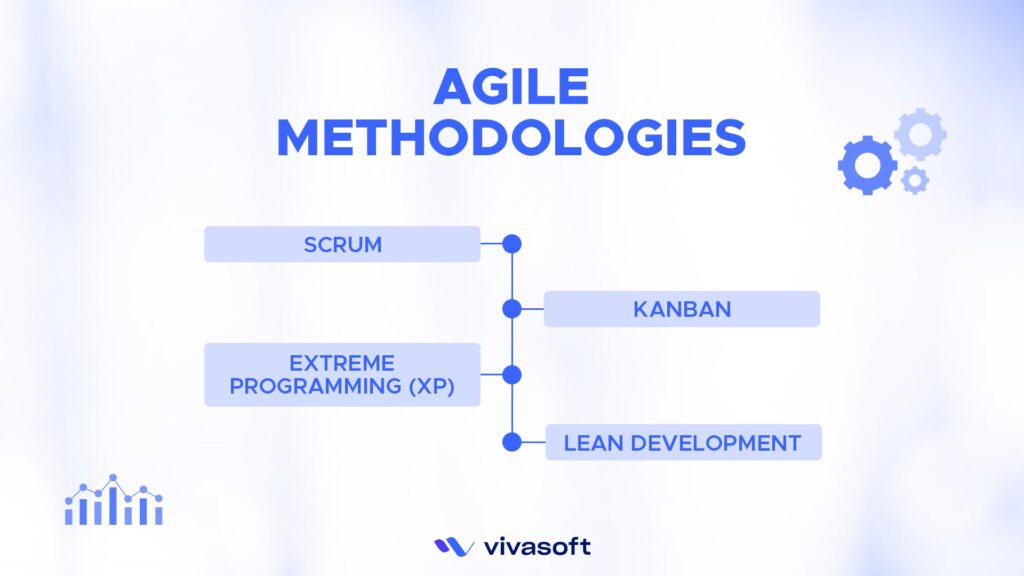
Scrum: Scrum is the most popular framework of the many that support Agile methodology. It is characterized by its iterative approach, defined roles (such as Scrum Master and Product Owner). It has some mandatory stages in development such as Sprint Planning, Daily Stand-ups, and Sprint Review. Scrum is best suited for projects with rapidly changing requirements.
Kanban: Kanban is a visual workflow management method. It focuses on limiting work in progress (WIP) and optimizing flow. Tasks are represented as cards on a Kanban board. Different stages of the development process are indicated in columns. This method helps teams to visualize the project progress.
Extreme Programming (XP): Extreme Programming (XP) is a Agile development framework, developed by Kent Beck. This methodology is based on the idea of finding “the simplest thing that will work”. It focuses on engineering best practices, such as test-driven development (TDD), pair programming, continuous integration, and frequent releases. XP uses rapid feedback and collaboration to improve software quality and responsiveness.
Lean Development: Lean development methodology applies principles from lean manufacturing, created by Toyota. And it is used in software development. This method focuses on eliminating waste, optimizing value delivery. Lean methodology is often linked to the concept of “minimum viable product.”
SDLC vs. Agile Development
| Differences | SDLC | Agile |
|---|---|---|
| Structure and approach | SDLC follows a structured, sequential & predictive approach. | Agile methodology is based on an iterative & adaptive approach to software development. |
| Flexibility and adaptability | SDLC is less flexible. Changes may require revisiting previous phases. | Agile is highly flexible & adaptable. It can incorporate changes easily at any stage of development. |
| Project management style | SDLC employs traditional project management methodologies with defined roles, responsibilities, and formal documentation. | Agile promotes self-organizing teams and adaptive planning. It puts less focus on hierarchical structures and complex documentation. |
| Risk management | SDLC has a proactive risk management approach. This method requires identifying and mitigating risks early in the project lifecycle. | Agile manages risks through iterative development, rapid feedback, and continuous adaptation. |
| Time and cost considerations | SDLC has fixed timelines and budgets. It is less flexible to accommodate changes. | Agile prioritizes delivering value quickly and efficiently. It focuses on maximizing ROI. |
| Client involvement and feedback loop | Client involvement in SDLC projects tends to be more structured. It has formalized requirements gathering and approval processes. | Agile requires a.ctive client involvement throughout the development process. It has frequent opportunities for feedback and collaboration. |
Benefits and Limitations of SDLC and Agile Development
Now, we are going to describe the benefits and limitations of both development methodologies to have a clearer view on the comparison.
Benefits of SDLC
Predictability and Stability
SDLC provides a structured framework for software development. This leads to predictability and stability throughout the project lifecycle. SDLC follows predefined phases and processes. So, developer teams can better estimate project timelines, resource requirements, and potential risks.
Comprehensive Documentation
SDLC methodology requires project requirements, designs, and implementation details are clearly documented at each stage of development. This comprehensive documentation works as a valuable resource for developers, testers, and other stakeholders. It provides insights into project objectives, scope, and deliverables.
Efficient Resource Utilization
SDLC helps in the resource utilization of a development cycle. SDLC ensures proper distribution of roles, and responsibilities to the team members. Efficient resource utilization results in lower costs, enhanced productivity, higher-quality products.
Clear Project Milestones
SDLC divides the project into distinct phases. Each phase comes with clear milestones and deliverables. These milestones help teams to track their accomplishments and identify any deviations from the project plan. It helps in delivering high-quality software within the specified timeline.
Limitations of SDLC
Lack of Flexibility
As SDLC follows a structured, sequential approach to software development, it can limit flexibility in responding to changing project requirements. Changes to project scope or priorities may require revisiting previous phases. This leads to delays and additional expenses.
Limited Adaptability to Changing Requirements
According to SDLC methodology, project requirements are well-defined and stable from the start. But requirements often evolve over time in today’s dynamic business world. This happens for changing customer needs, technological advancements, or market demands. SDLC’s rigid approach may struggle to adapt to these changes effectively. This can result in discrepancies between the final product and user expectations.
Longer Development Cycles
SDLC often results in longer development cycles compared to more agile methodologies. As it is sequential in nature, each phase of the SDLC must be completed before proceeding to the next. This leads to a longer development cycle and may cause delays to market software products.
Benefits of Agile Development
Flexibility and adaptability
The flexible and adaptable characteristics of Agile development method helps teams to respond quickly to changing requirements, market conditions, and customer feedback. Here, large projects are broken into smaller portions. Agile teams can adjust priorities, incorporate new features and deliver solutions that meet changing customer needs.
Rapid Feedback Loops
Agile development method facilitates rapid feedback loops throughout the project lifecycle. It requires frequent and transparent communication between development teams and stakeholders. Working softwares is delivered at regular intervals.
So, Agile teams get feedback from end-users, clients, and other stakeholders. This helps them to identify issues early, and make corrections as necessary. The continuous feedback loop ensures that the final product aligns closely with user expectations.
Reduced Risk of Failure
In Agile development, developers regularly assess their works during sprints. So, it’s easier to spot any potential risks or minor issues. These minor issues are resolved before they can escalate, increasing the project’s chances of success.
Continuous Improvement
Agile teams evaluate their processes, find areas for improvement, and seek to achieve better results with each iteration. Regularly reviewing practices helps them in optimizing efficiency, quality, and collaboration. This commitment to continuous improvement delivers value to customers more effectively.
Better Quality & Control
Agile’s transparent communication and integration of continuous feedback provide project managers better control over the project. The developer teams work closely with the stakeholders throughout the development cycle. They regularly review progress, share information continuously and adapt to changes quickly. This iterative approach helps to identify and resolve issues on a regular basis. A part of the development process is considered accomplished when it is fully functional after repeated testing. Thus, the quality standards are met throughout the development process.
Limitations of Agile Development
Requires active client involvement
Agile development requires active client involvement throughout the project lifecycle. This collaboration leads to alignment with client expectations. But the downside is that it requires a significant investment of time and resources from the client side. It may become a challenge in projects with busy or unresponsive clients.
Lack of Comprehensive Documentation
Agile Development prioritizes working software over comprehensive documentation. It can lead to challenges in terms of knowledge transfer, onboarding new team members, and maintaining project continuity. Documentation produced by Agile teams such as user stories, acceptance criteria, and release notes may not provide the level of detailed information typically associated with traditional SDLC approaches. This may cause misunderstandings and make the team more dependent on tacit knowledge.
Difficulty in Estimating Timelines and Costs
Estimating project timelines and costs accurately is challenging in Agile development methods. The iterative and incremental nature of Agile projects means that requirements & priorities may change over time, which can impact project schedules and resource allocations. Agile teams may struggle to provide clients accurate financial and project completion estimations.
Common Ground Between SDLC & Agile Development
While the two models may differ in many ways, they also have certain similarities. Their shared dedication to delivering high-quality software projects is highlighted by a number of commonalities.
Focus on Delivering Quality Software
Both SDLC and Agile Development prioritize delivering high-quality software that meets user needs. SDLC achieves this through a structured approach to development and Agile focuses on continuous improvement and rapid delivery of working software increments. Despite the different methodology used, the ultimate goal remains the same. And that is delivering dependable, scalable, and user-friendly software solutions.
Emphasis on Collaboration and Communication
Collaboration and communication are essential components of both SDLC and Agile Development. Both methodologies give importance to strong communication between team members, stakeholders, and clients. By promoting active listening, and shared ownership SDLC and Agile development ensure alignment and transparency throughout the project lifecycle.
Iterative Approach to Development
Although there are some differences in formality and structure, both Agile Development and SDLC support an iterative approach to software development. SDLC divides the project into sequential phases with predefined deliverables. Agile iterates through short, time-boxed cycles known as sprints or iterations. In both cases, the iterative method helps teams to build, test, and refine software incrementally.
Conclusion
We have seen that there are some similarities between the SDLC and Agile but they differ in methodologies they employ. Both of them have their own benefits and drawbacks. Weighing them is necessary before choosing one model for your projects. Both models are suited for certain software development projects. Whether you choose SDLC or Agile, the ultimate goal remains the same and that is delivering high-quality software that meets client needs.
FAQs
Which approach is better for large-scale projects?
For large-scale projects, the Agile development model is preferable. It breaks the large projects into smaller portions and it is flexible & adaptable to changing requirements. However, the best approach depends on factors like project complexity, team expertise, and organizational culture.
How do you choose between SDLC and Agile for a project?
Choosing between SDLC and Agile depends on project complexity. If the project has well-defined requirements, stable scope, and predictable outcomes, SDLC may be suitable. In contrast, Agile is ideal for complex projects with changing requirements.
Can SDLC and Agile methodologies be combined?
Yes, SDLC and Agile methodologies can be combined to create a hybrid approach that combines the strengths of both frameworks. For example, you can use SDLC for high-level planning and structure and incorporate Agile principles like iterative development and continuous feedback for flexibility and adaptability. Depending on the specific project’s needs, the organization may combine the two models.
How does team structure differ in SDLC and Agile environments?
SDLC environments follow a more traditional hierarchy for team structure with defined roles and responsibilities. There may be distinct teams for each phase of the development process, such as analysts, designers, developers, and testers. In contrast, Agile environments promote self-organizing teams with shared responsibilities. Another thing is that SDLC produces very thorough documentation. And Agile teams focus on the fast delivery of results instead of creating very much documentation.
How do you manage risks in Agile development?
In Agile development, risks are managed through iterative development, continuous feedback, proactive risk identification and risk mitigation strategies. Also, techniques like risk analysis, user stories, and regular reviews help teams identify and manage potential risks throughout the project development lifecycle.




